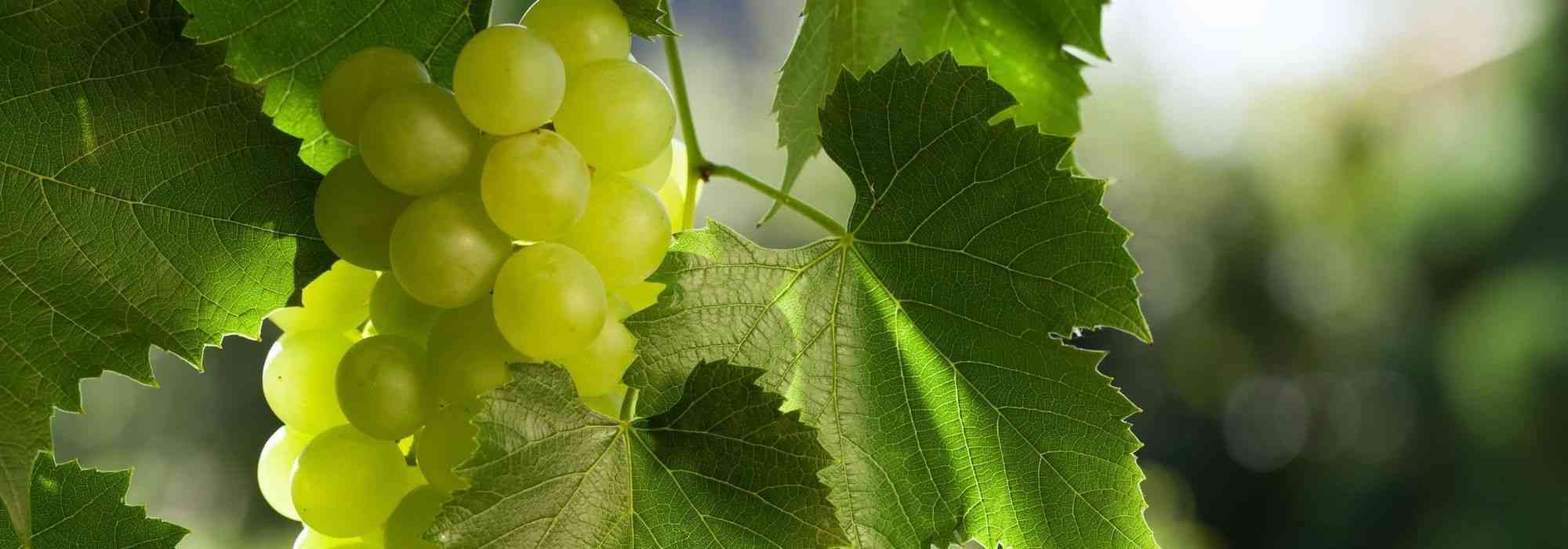
5 climbing fruit plants to grow in the garden
for a delicious display
Contents
Climbing fruit trees are popular in gardens! A feast for the eyes and the stomach, they decorate a support attractively while saving space by using vertical space. Whether trained on a pergola, a trellis against a wall or on a wire fence, climbing fruit trees are easy to grow in the garden. To help them thrive, choose varieties suited to your climate, support and aspect. Discover 5 decorative and productive climbing fruit trees.
Kiwi, the little fruit on the rise...
Increasingly popular in gardens, Actinidia or kiwi-tree is a fruit-bearing climbing liana that produces kiwi. It can be easily trained against a trellis, wire mesh, along a pergola, on a wall stretched with strong wire, or even between two trunks. To develop well and fruit properly, it needs a sunny, sheltered position. Kiwi prefers a cool, rich, light, non-calcareous, well-drained soil. It dislikes stagnant moisture and drought. Very hardy and resistant down to -15°C, kiwi can be grown almost everywhere at our latitudes. Only mountainous regions and Mediterranean coastal areas are unsuitable for this plant. Kiwi is not very demanding and, once well established, requires little maintenance. The first harvest will occur 4 to 5 years after planting.
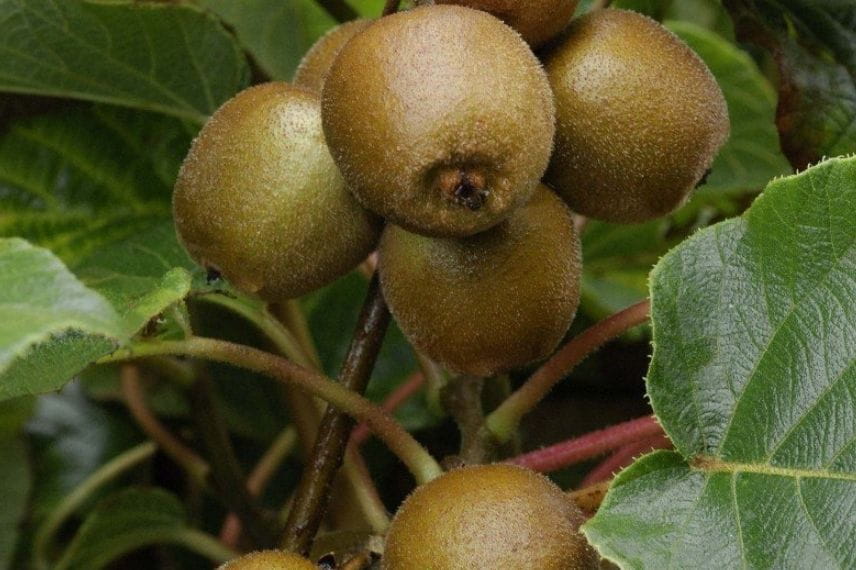
Which kiwi variety should you choose?
If you have space in your garden, you will need to plant a male kiwi plant and a female plant to obtain fruit. There are also self-fertile varieties, ideal for small spaces.
- Kiwi Solissimo — a self-fertile variety that yields an abundant harvest of brown, villous and sweet fruits.
- Kiwi arguta Issai (Kiwai) — a self-fertile liana producing small fruits with a smooth skin that do not need peeling.
- female Golden Delight yellow kiwi, with the male Golden Delight kiwi, produces flavoursome fruits with yellow flesh.
- Hayward female kiwi, with male Atlas kiwi, produces large fruits with green, flavoursome flesh.
→ find all our kiwi and kiwai varieties here
Passionflower, also a treat for the eyes
Passionflower, also called passion flower, is a pretty climbing liana with delightful colourful and exotic flowers. Frost-tender, plant in a mild climate, in sun and sheltered from cold winds. Passionflower is therefore suited to a Mediterranean climate in ground for hardy varieties, or under glass for tender varieties. In other regions, prefer it in a pot to overwinter. Fast-growing, it easily covers a trellis, a wire mesh, a wall or a pergola. In a warm sunny climate, passionflower will produce fruits with juicy pulp. Undemanding, passionflower establishes in any type of substrate but prefers rich soil and requires very little care.
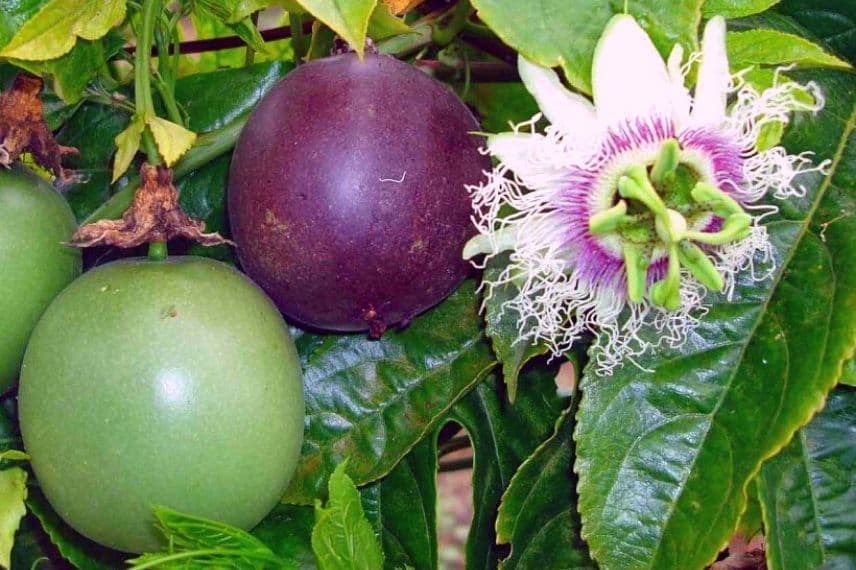
Passionflower flower and fruits
Which passionflower variety to choose?
Passionflower fruits are edible and appealing, as with Passiflora edulis, but rather bland in ornamental varieties. Here is a selection of the most interesting varieties :
- Passiflora edulis is the variety that produces the well-known passion fruit. Self-fertile, it is however tender below 0°C.
- Passiflora incarnata produces tasty fruits but needs two plants to set fruit. It is also used in herbal medicine. It is relatively hardy down to -10°C.
- The variety Passiflora alata is notable for its magnificent red ornamental flowers. It produces some fruits but will require two plants. It is frost-tender.
- Passiflora quadrangularis offers magnificent red flowers in summer, followed by large fruits with a taste both sweet and tangy. It often requires manual pollination to set fruit. Disease-resistant, it nevertheless fears frost.
Discover other Fruit-bearing climbers
View all →Available in 0 sizes
Available in 1 sizes
Available in 1 sizes
Available in 1 sizes
Available in 2 sizes
Available in 1 sizes
Available in 1 sizes
Available in 1 sizes
Available in 2 sizes
Available in 1 sizes
Grapevines in the garden
Grapevine, Vitis vinifera, is a shrub sarmentous and climbing plant that produces beautiful tasty, sweet grapes. With foliage turning red from cold, it is also very ornamental and trains easily on a wall, a trellis or a pergola. Hardy to -20°C, it is grown throughout France, in sunny situations, except in cold montane climates. It prefers well-drained, dry, stony soil.
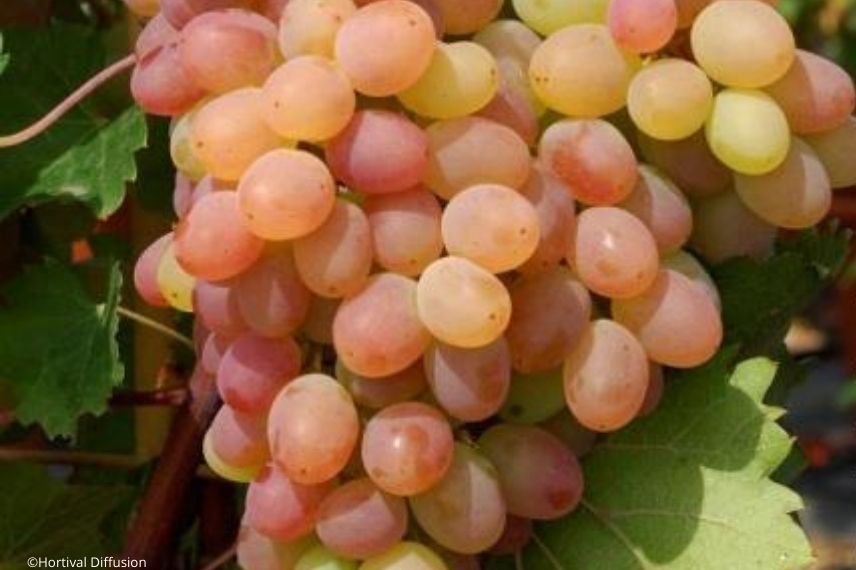
Katharina grapevine
Which grapevine variety to choose?
All grapevines can be trained and there are varieties to suit every taste; here are some examples:
- The Ampelia Perdin grapevine is a variety very resistant to disease and early-maturing, ideal north of the Loire. Its grape clusters are white and perfect for table use.
- The Roi des Précoces table grape variety produces beautiful black-blue grapes. Its early harvest is perfect for regions north of the Loire.
- The Muscat de Hambourg grapevine, with its plum-coloured black grapes, is a disease-resistant variety and ideal for south of the Loire.
- The Katharina grapevine is notable for its pink grape clusters. Disease-resistant, it can be grown both north and south of the Loire.
→ find all our grapevine varieties
Schisandra, a touch of Asia in the garden
Schisandra are charming climbing lianas of Asian origin, which will clothe a trellis, pergola, fence and even a tree. After a lovely spring flowering, schisandra produces clusters of aromatic berries in red or black, called Chinese five-flavour berries. These berries are renowned for their medicinal properties. Schisandra thrives in partial shade, avoiding sun at hottest hours. It prefers fresh soil and dislikes drought. Hardy, it can tolerate down to -15 to -25°C depending on variety. It will adapt perfectly to oceanic and continental climates, but will not suit montane and Mediterranean climates. Generally deciduous and robust, it requires little maintenance. Note that, apart from the self-fertile variety Schisandra chinensis Sadova N°1, Schisandra is a dioecious species that requires planting several plants to obtain fruiting.
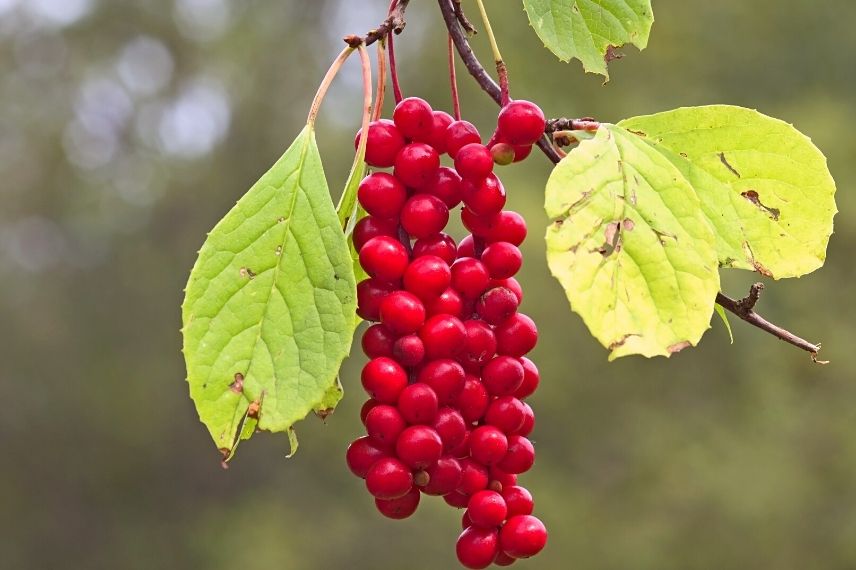 Which schisandra variety to choose?
Which schisandra variety to choose?
- schisandra rubriflora is a variety with carmine-red flowers and bright red fruits, reaching 3 to 5 m. This variety is dioecious and requires several plants to produce fruit.
- Variety schisandra chinensis produces pretty greenish-white flowers in spring, followed by clusters of bright red fruits. Dioecious, this variety requires planting several plants for fruiting.
- schisandra chinensis Sadova N°1 is a self-fertile variety with greenish-white to pinkish flowers. Berries are red.
- Variety schisandra grandiflora is a dioecious variety that needs several plants to fruit. Its white, sometimes pale pink, flowers give way to red fruits.
Blackberry, a reliable choice
Blackberry, or bramble, is a suckering bush bearing delicious small fruits: blackberries. Certain varieties with upright canes are trained into a fan, while other woody-climbing-stem varieties can cover an arbour. Plants are generally only slightly thorny or thornless.
Blackberry prefers sun or partial shade. It also appreciates shelter from a wall trained as an espalier and exposed to warm but not scorching sun. It thrives in light, rich, moist soil. Blackberry is hardy and easy to to grow in all regions, even mountainous, except Mediterranean fringes which are too dry and hot for it.
Which variety of blackberry to choose?
- The Dorman Red garden blackberry is a self-fertile variety producing appetising large red fruits. Hardy and vigorous, it can reach 3 m in length.
- The thornless Loganberry is a hardy, resistant variety that can reach between 2 and 3 m in length. Self-fertile, it will give gardeners handsome blackberries ranging from deep red to black.
- The Reuben perpetual blackberry offers large, flavoursome black fruits over a long period. Resistant and self-fertile, it can reach 2.5 m in length.
- The Dirksen Organic blackberry is a resistant, self-fertile, hardy and semi-climbing variety. Its shoots reach 2 m and produce large glossy blackberries.
→ find all our blackberry varieties here
To learn more
- Find all our Kiwi varieties available and also find our planting, pruning and care sheet.
- Visit our selection of passionflowers, each more beautiful than the last.
- To discover other grapevine varieties, click here, to help you choose the right vine, click there and for planting, pruning and care advice click here.
- To learn all about schisandra, find our planting, harvest and care sheet
- Find all our blackberry varieties and our advice on planting, pruning and care (unless you want to protect your garden like Sleeping Beauty’s).
- Subscribe!
- Contents
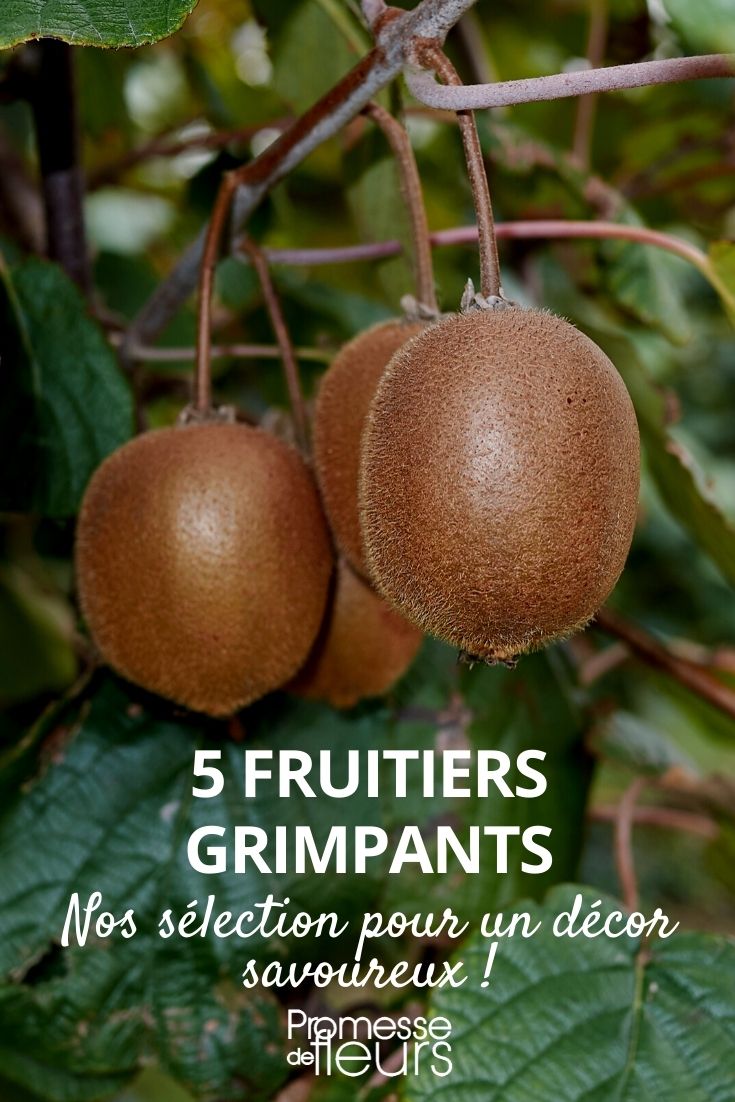































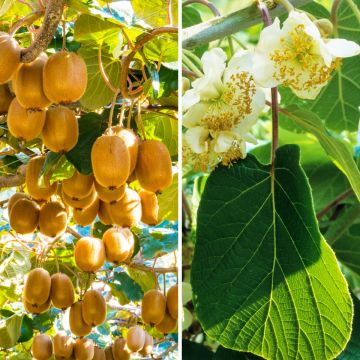
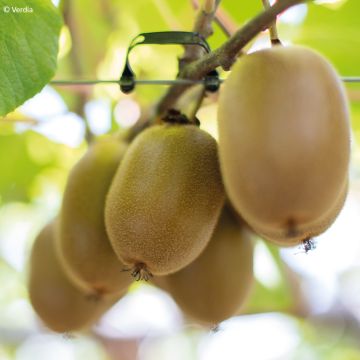
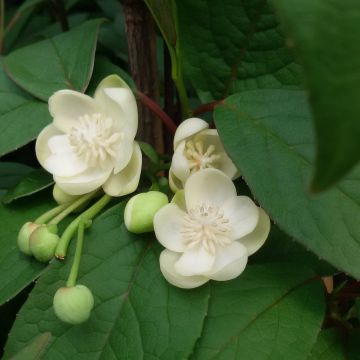
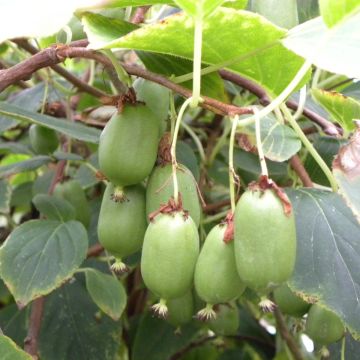
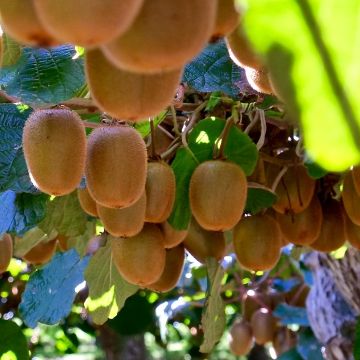
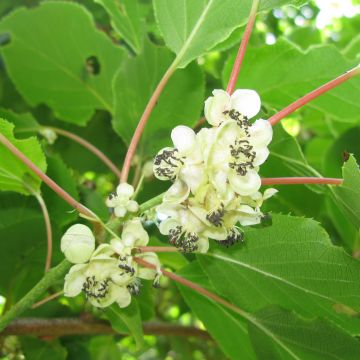
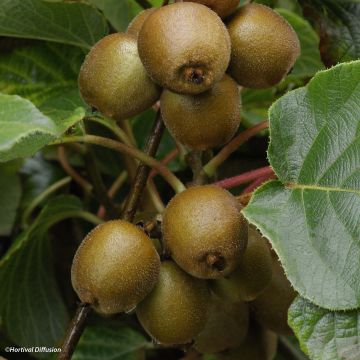
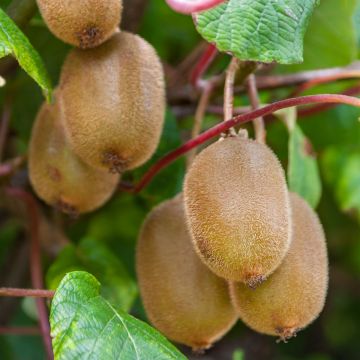
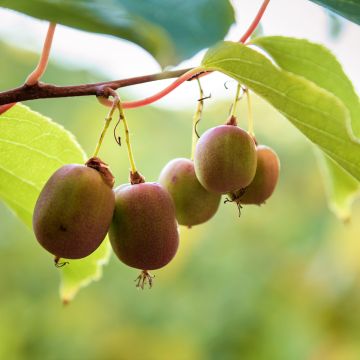
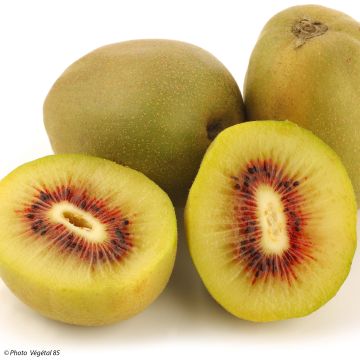

Comments